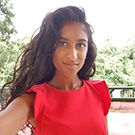Ontario Nature Blog
Receive email alerts about breaking conservation
and environmental news.
© Lora Denis
American bumble bee © Thom Wilson CC BY-NC-SA 2.0
The decline of bees worldwide has been of scientific and public concern in recent years, yet their diversity in Canada is not fully understood. From drilling through wood, cutting leaves, or even mining through the ground, the behaviour of bees is incredibly varied. There are over 800 native species of bees in Canada, 400 of which are found in Ontario, and 16 of those are bumble bees. Native bumble bees, in the genus bombus, are not to be confused with honey bees, in the apis genus. Honey bees are not native to Ontario and are managed by humans for their honey production.
As with all pollinators, bumble bees play a significant role in ecosystem health, food security and human health. Bumble bees often pollinate crops such as berries, since they travel shorter distances than honey bees. Their longer tongue make them more efficient at pollinating some native plant species, which they can forage from in cooler weather than honey bees. Sheila Colla, an ecologist and professor who has long advocated for native bee conservation, argues that the conservation of local bee species should not be valued for their benefit to humans alone.

Climate change threatens native bees by creating conditions favourable to some invasive species, which leads to the spread of disease and increased competition. Honey bees, which are not native to Canada, have evolved to feed from native plants best, so they can outcompete native species for food.
The primary cause of bumble bees’ population decline is habitat loss and land fragmentation, along with pesticide use. In other words, human behaviour is driving the decline.

On September 2, 2020, the Committee on the Status of Endangered Wildlife in Canada submitted 21 new assessments of species at risk. Twelve of these species are found in Ontario, including two bee species: the American bumble bee, listed as ‘special concern’ and Suckley’s cuckoo bumble bee listed as ‘threatened’.

Both bumble bee species were once common across grasslands, but their ranges have become fragmented as their habitat gets destroyed for industrial or agricultural development. This impacts the American bumble bee as they require different habitat types depending on its life stage.
The Suckley’s cuckoo bumble bee is one of the six true cuckoo bumble bee species occurring in North America. Like cuckoo birds, it depends on the nests of other bees to lay their eggs. So, as other species such decline, it becomes increasingly difficult for the species to survive.
Ontario Nature has long advocated for species at risk in Ontario, including native pollinators. For instance, in 2017, we fought against the use of neonicotinoid pesticides which are toxic to bees and hinder their ability to reproduce.


Gananoque Lake Nature Reserve © Smera Sukumar
The work of Dr. Heather Holm, North American native bee expert confirms that only a few bees are supported by dandelions, a world wide invasive species. Allowing those to dominate in lawns is NOT a viable answer for most native bees. We desperately need land owners and landscape professionals who can restore large areas of land to native plant dominated meadows. The government is not going to save us…it is too busy defending itself. We need to take the future of these animals into our own hands and really learn what a native plant meadow is and how to grow it…because native meadows are/were full of food for people too. Honeybees are generalists and can do very well (probably better as the research is beginning to show) on a variety of native plants. Just letting dandelions go or (heaven forbid) actively spreading them in a lawn is a simplistic cop-out. Dandelions don’t stay in lawns, change soil chemistry, suppress the reproduction of other flowers with its pollen transported by bees, and a happy plant can take up a square foot of space. I was heartbroken one year driving through Ontario and Quebec and seeing miles and miles of them. It is too bad we don’t see them for that they really are, the Hernan Cortez of plants, wanting to own the world.
Native pollinators are essential to our indigenous eco system which in turn is essential to us. We need to stop using agricultural pesticides that use neonicotinoids or similar chemicals. Patti Hadju is the Federal Health Minister responsible for banning this chemical – write to her and express your concerns.
We need a Bumble Bee society like the Uk’s Bumble Bee Conservation Trust – anybody interested?
thanks for the article. i filled out the questionnaire, but a lot of the questions seemed flawed on principle. they seem to ask the respondent to justify the protection of each individual species. shouldn’t all species be protected de facto, regardless of their “benefit”?
I strongly support all methods to protect and encourage the survival and growth of bee populations in Canada. i have recently learned that there are several different species of bee in Canada including the bumble bee, These creatures provide vital pollinator encouragement for plant growth ,
Please protect natural environments essential for growth of bee populations and end use of unnecessary and acutely harmful insecticides .Insecticide use harms bee and other natural species and is also harmful to human populations.
The simple fact is that once we destroy the homes of our polinators, we will never get them back. In the thirty odd years I’ve lived in Canada, I’ve seen the bird and insect numbers drop from thriving numbers to less than a third of their former populations. We need THEM to survive, we cannot live without them, either physically as a part of the environment, and as a huge contribution to our mental health.